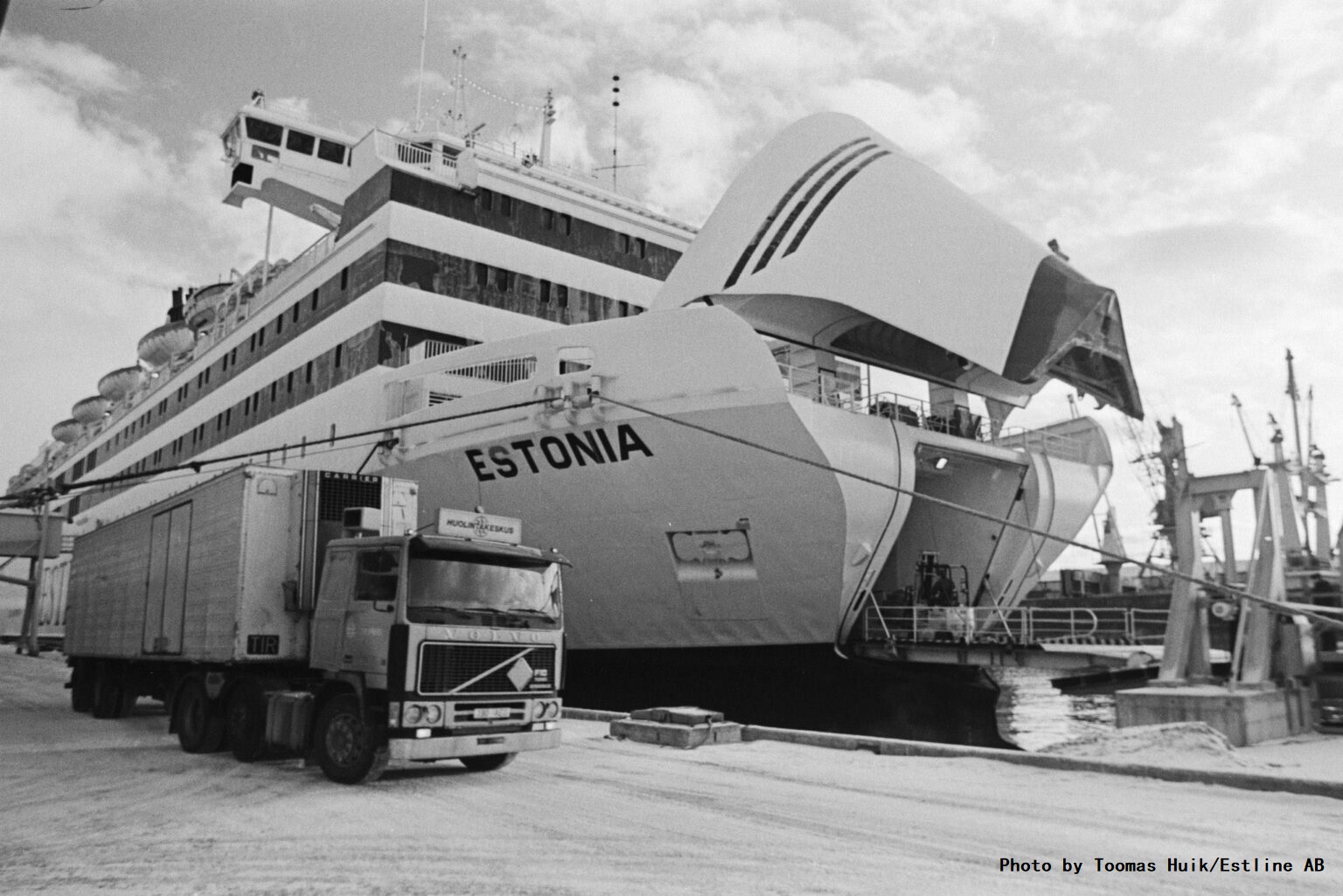Over the years, it has become something of a tradition to benchmark all maritime disasters to the Titanic, like a game of comparing cards. The truth is, however, that tragedy has an inexhaustible store of dark plot-twists, catching even the best-prepared by surprise and turning them into powerless spectators of yet another grim episode. And despite some people’s morbid appetite for “the next Titanic”, we must always remind ourselves that every life lost at sea is a world come to an end. Such is the harrowing story of the MS Estonia, doomed to bring suffering and misfortune to those who sailed on her.
Murder on the Baltic
When Viking Sally (later Estonia) left the Meyer Werft in 1980, no one expected her to gain any prominence outside the Turku-Stockholm passenger route. Despite her size and modern furnishings, the ro-ro cruiseferry was nothing to write home about, except perhaps the odd vehicle-loading system at the bow, which opened like a duckbill. Everything about her indicated just another workhorse in the fleet of Finland’s Viking Line. Six years later, though, her lifeline took a sinister turn.
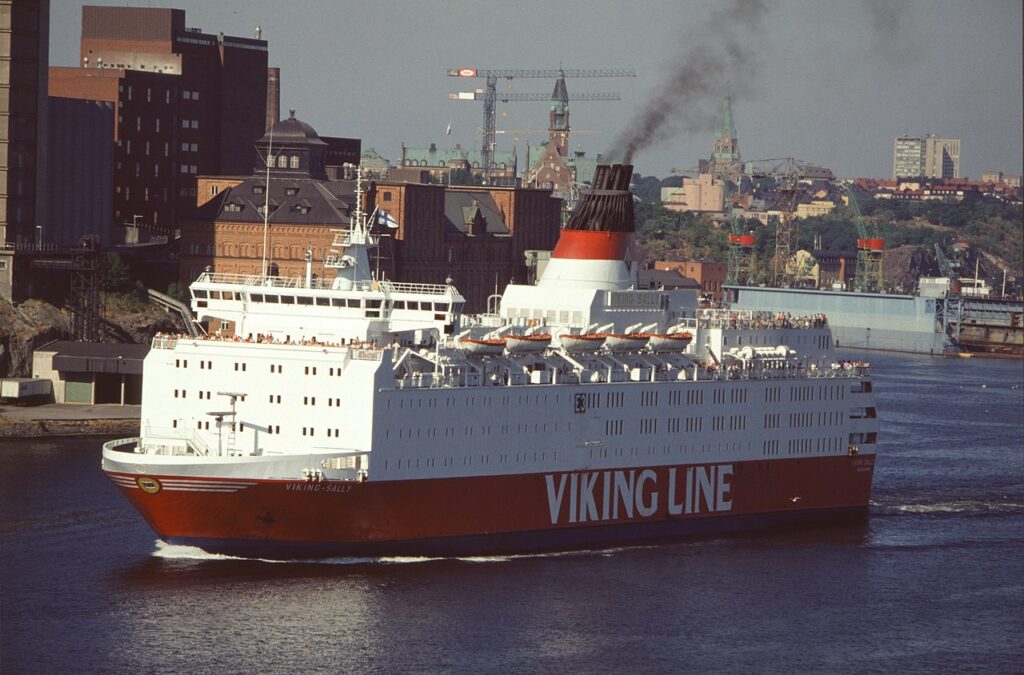
On 10 July 1986, a quarrel erupted in one of the passenger cabins, when businessman Antti Eljaala accused Reijo Hammar of stealing money from his wallet. Hammar, a cold-blooded criminal, stabbed Eljaala with a knife and strangled him to death with a strip of bedsheet. Sentenced to life, Hammar soon became infamous as Finland’s most dangerous criminal, with his 1988 prison break, after shooting a guard with a sawed-off shotgun. Once on the loose, he robbed several banks and murdered one of his accomplices, before the police caught up with him. Ironically, Hammar received a presidential pardon in 2004, only to carry on with his nefarious lifestyle and return behind bars.
A Mystery Unsolved
One year after the first murder, the Viking Sally became the scene of another gory incident – one that has remained unsolved for more than 30 years. On 27 July 1987, three young West German tourists boarded the ferry on their way to Lapland. Like many other university students, Klaus Schelkle, his girlfriend Bettina Taxis, and their friend Thomas Schmid planned to spend the night in the common areas to save money.
When Schmid fell asleep around 1pm, Schelkle and Taxis went out on Deck 9, looking for a sheltered corner to roll out their sleeping bags. A few hours later, three Danish boy scouts stumbled upon a horrifying scene – two people, covered in blood from head to toe, struggling to get up and call for help. The Finnish Coast Guard dispatched a helicopter, but upon arrival at the hospital, Klaus Schelkle was pronounced dead. Bettina Taxis survived, against all odds, but had no memory of the events to aid the investigation.
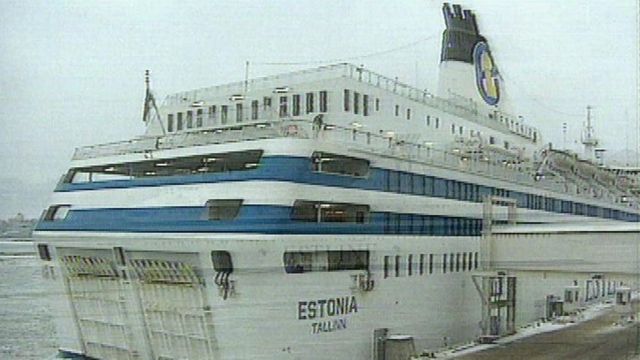
Despite much fruitless effort to solve the case, the Finnish police never gave up. More than thirty years after the incident, they arrested and prosecuted a Danish citizen, allegedly a member of the same scout group as the boys who had discovered the victims. The man was recently acquitted, and, at the time of writing, the murder remains unsolved.
While investigators pored over the evidence in the late 1980s, the Viking Sally changed multiple owners and names, until joining the fleet of Nordström & Thulin in 1993 as MS Estonia. The new name did nothing to improve her fortune.
Disaster Redefined
The final and most tragic chapter began on 27 September 1994, when she departed Tallinn for Stockholm with 989 people on board. Despite an ominous weather forecast, cargo loading was somewhat reckless, the ship leaving port with a slight starboard list. A couple of degrees, true, but as weather conditions deteriorated, it increased to 4⁰, even after the heeling tanks had been adjusted to maximum.
As waves reached 4 meters, the captain ordered extending the fin stabilizers, which eased some of the rolling, but the pitching remained as before. This was bad news for the Estonia. She was designed with a jaw-like hinge at the bow, which opened a large visor to let the loading ramp down. Out at sea, despite being secured with special bolts, the visor remained a vulnerable spot, especially when ramming into tall waves at full speed, as it did on that night.
Shortly before 1am, a loud bang echoed through the ship. The officer on duty ordered a seaman to inspect the ramp and visor locking mechanisms, but none of the light indicators showed any abnormalities. The noises continued, loud enough to alarm both crew and passengers. The master dispatched the sailor on watch to the car deck, but before he could reach it, a final bang shook the vessel, and the Estonia heeled sharply to starboard. Panic took over.
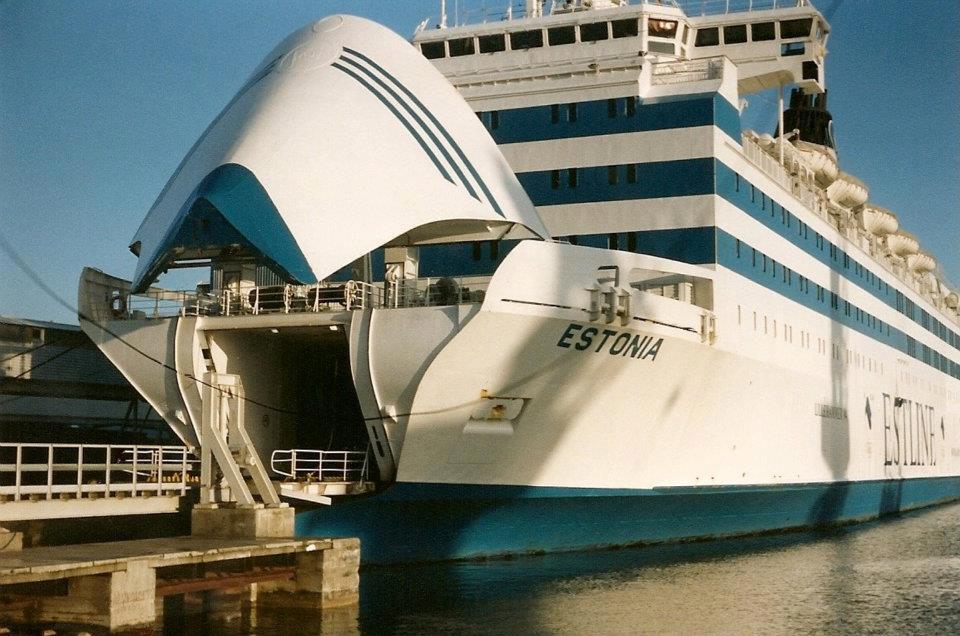
As the general lifeboat alarm sounded through the speakers, passengers rushed out into the corridors. With the list now almost 90 degrees, the oil-lubrication system of the engines failed, cutting the power and leaving the ship lying on her side in complete darkness. The rescue operation was swift and efficient, with the first vessel arriving shortly after 2am, only to find a few life rafts scattered around by the storm. The Estonia was already headed for the bottom with 852 souls trapped inside.
Investigations of the wreck concluded that the sinking had been caused by the waves tearing off the bow visor. The crew had failed to identify the damage due to an odd design weakness – passenger accommodation decks obstructed the view from the bridge, leaving the bow out of sight. Officers only had a monitoring panel to rely on, but the locking sensors had remained intact, even after the full detachment of the visor. With the dropping of the ramp, there was nothing left to prevent water from rushing in and sinking the Estonia in less than 40 minutes. The 852 who went down with her did not stand a chance.
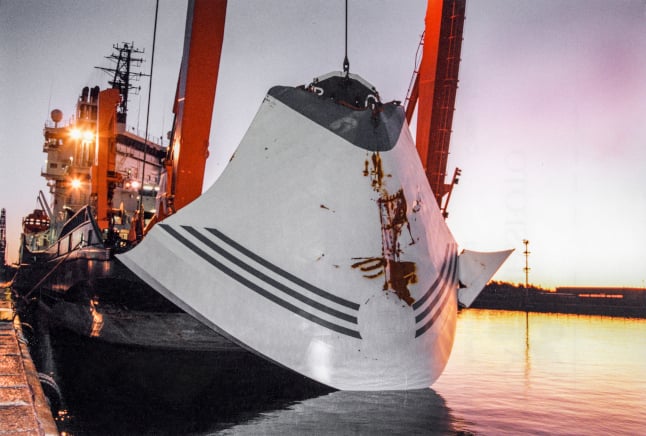
A Sinister Plot or the Usual Conspiracy Theory?
Despite an international treaty that sanctified the wreck as a resting place, a 2020 Swedish expedition made a secret descent to discover a 4-meter hole in the hull, triggering a new investigation. The latest footage sparked a storm of speculations, from a collision with a submarine to a deliberate explosion.
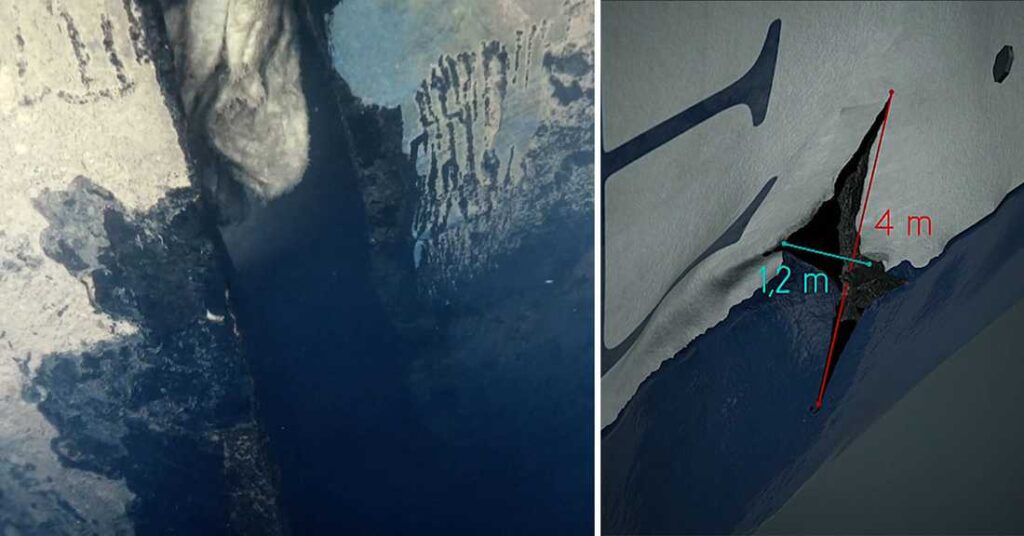
“Estonia: The Discovery that Changes Everything” by Henrik Evertsson. (Credits: Aftonbladet)
Rumor even has it that the governments of Sweden, Russia, and the UK were conducting a clandestine operation on the night of the tragedy, smuggling military equipment on board the Estonia. Whatever unexpected turns the renewed investigations might take, let us all hope that the media community will remember to show consideration to all those still grieving for their loved ones.
The Shipyard
If you found this article interesting, click here to find out more about RORO ships.
Did you know The Shipyard is on Fine Art America? Click here for maritime photography and gifts.

